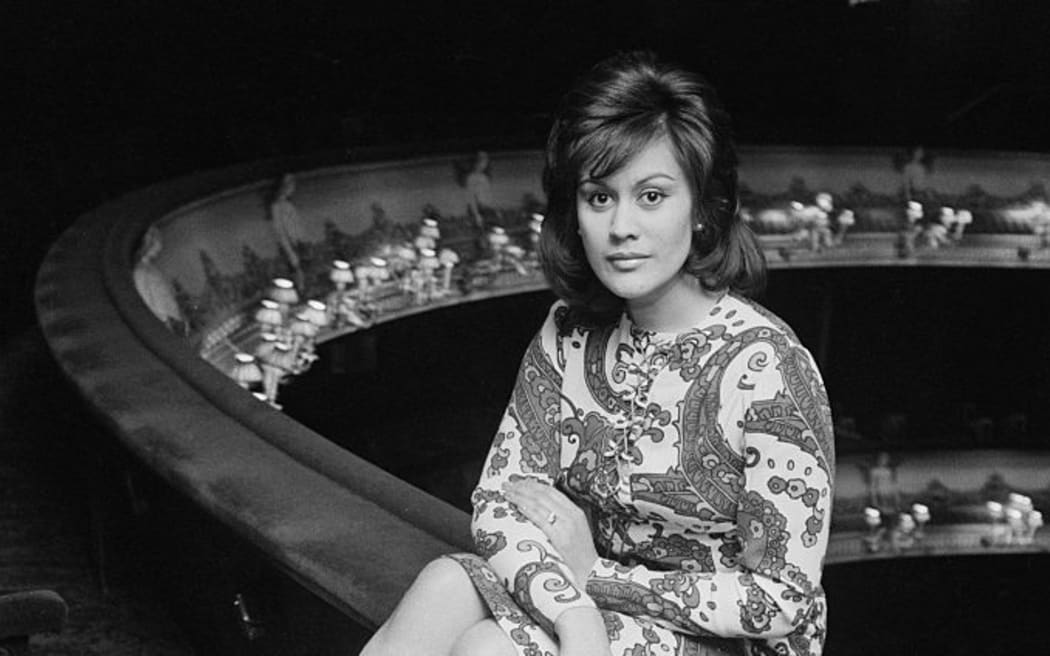
New Zealand operatic soprano Kiri Te Kanawa at the Royal Opera House Covent Garden, London, 5th March 1971. Photo: Michael Stroud/Daily Express/Hulton Archive
The warm, melodious voice of Dame Kiri Te Kanawa (Ngāti Maniapoto) is known fondly around the world.
In 1971, it took her to the Royal Opera House in Covent Garden, where she debuted as the countess in Le Nozze de Figaro to critical acclaim.
Ten years later, it gave her the opportunity to perform at the royal wedding of Prince Charles and Princess Diana.
In a career spanning nearly 60 years, Dame Kiri has received many accolades for her contributions to music - and for her sense of style both off and on-stage.
In honour of her 80th birthday, RNZ revisits the looks of a New Zealand icon.
Curator Stephanie Gibson has had the pleasure of mapping Dame Kiri's many looks - from early rites of passage to milestone successes - in the Te Papa exhibition Kiri's Dresses: A Glimpse into a Diva's Wardrobe.
"It's a lovely, rich collection," Gibson says.
"We could actually tell her story through the garments; it was a gift from the heavens for a curator."
The exhibition revealed Dame Kiri's sharp eye for fashion, and unraveled just how intimately she was involved in presenting herself to the world.
1971 - The Countess in Le Nozze de Figaro

Kiri Te Kanawa as the Countess in Le Nozze de Figaro at Covent Garden in 1971. Photo: Supplied
While traditional operatic garments were out of Dame Kiri's hands, this one aligned with her many of her needs - namely, a clear chest and nothing fussy around the neck.
"It's revealing quite a lot of her chest, but you really focus on the singing, you focus on her voice," Gibson says.
The technical aspects of stage costuming also play a part.
"She needed the comfort, security and stature that boning would give you in the bodice. You're basically an athlete when you're singing an opera on stage, so the dresses helped her hold herself in a certain way, so her breathing was good, her posture was good.
"The dresses are a part of the tools of her trade, they're not just a pretty piece of fabric. They're very well thought through, quite architectural underneath."
1975 - Pamina in The Magic Flute
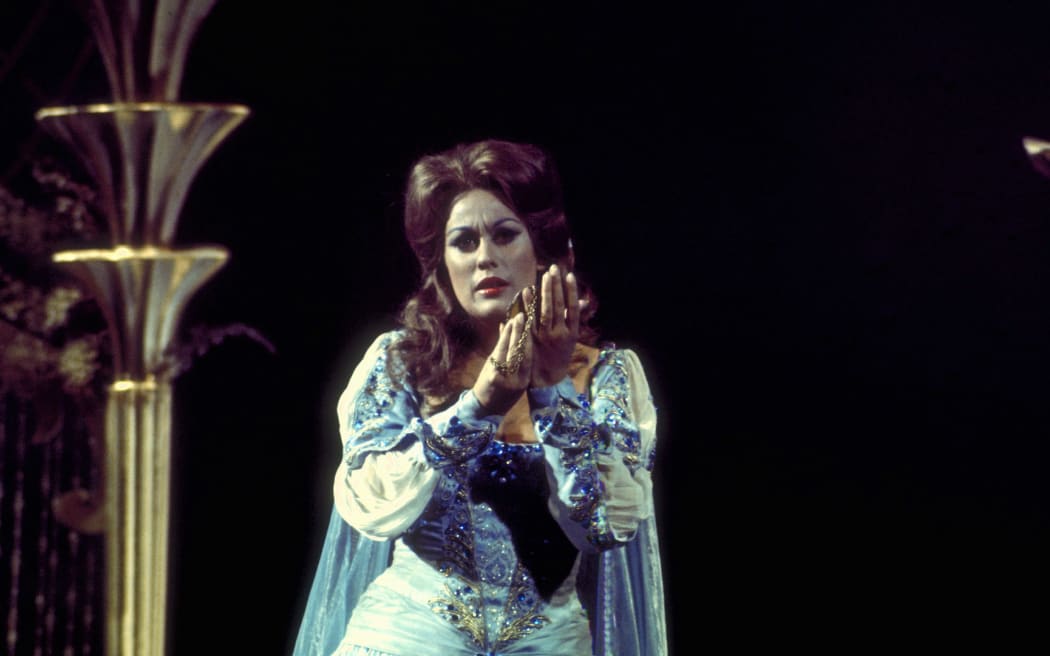
Dame Kiri Te Kanawa as Pamina in The Magic Flute. Photo: Ron Scherl
This dress was quite a bit lighter compared to traditional operatic dress. Gibson suggests it could have embellishments worked into it - paint, glue, stitching, layers, nylons.
"Costuming can be quite different from regular clothing. I should imagine that a lot of these garments were very hot, if not heavy," she says.
While Dame Kiri had a vast catalogue of glorious, opulent, ever-changing dresses, there was always one constant on stage: "She could just wear the same pair of shoes every night because nobody could see them under the long gown."
1981 - Royal wedding of Prince Charles and Lady Diana
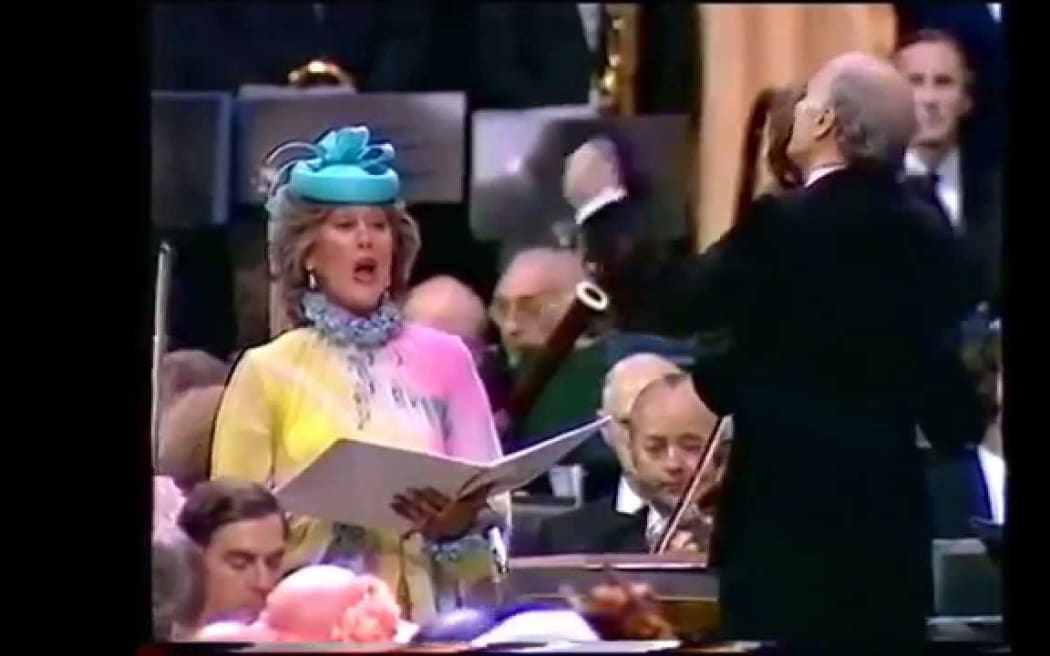
Dame Kiri Te Kanawa sings at the wedding of Prince Charles and Lady Diana Spencer, St Paul's Cathedral, 1981. Photo: Screenshot
It was considered the wedding of the century with an estimated 750 million people watching the ceremony worldwide. For New Zealand, it was a moment of pure pride seeing Dame Kiri perform.
However, viewers were distracted by one thing: the dress. It broke all her own rules, with a low hat touching her forehead and ruffles around her neck coming right up to the chin.
"That's what drew people's attention and criticism," Gibson recalls.
"It became distracting visually... there was a lot happening and that's why people really picked up on it at the time."
One journalist described the outfit as a "multi-coloured tablecloth and air hostess' hat," while Prince Charles was reported to have quite liked the dress, likening Dame Kiri to a "wonderful canary".
"I've watched footage of the wedding and all the women in the audience are wearing dresses like this," Gibson says. "But they're just wearing one colour at a time."
Even though her look was in line with the trends of the time, "people were very cruel [about her look]," Gibson says.
"She just laughed them off. She knows what she was trying to achieve, she loved it, she had a great day, and she became a Dame afterwards.
"Dress comments are neither here nor there, she sang beautifully. And she got the biggest viewing of her life around the world."
1985 - Marschallin in Der Rosenkavalier
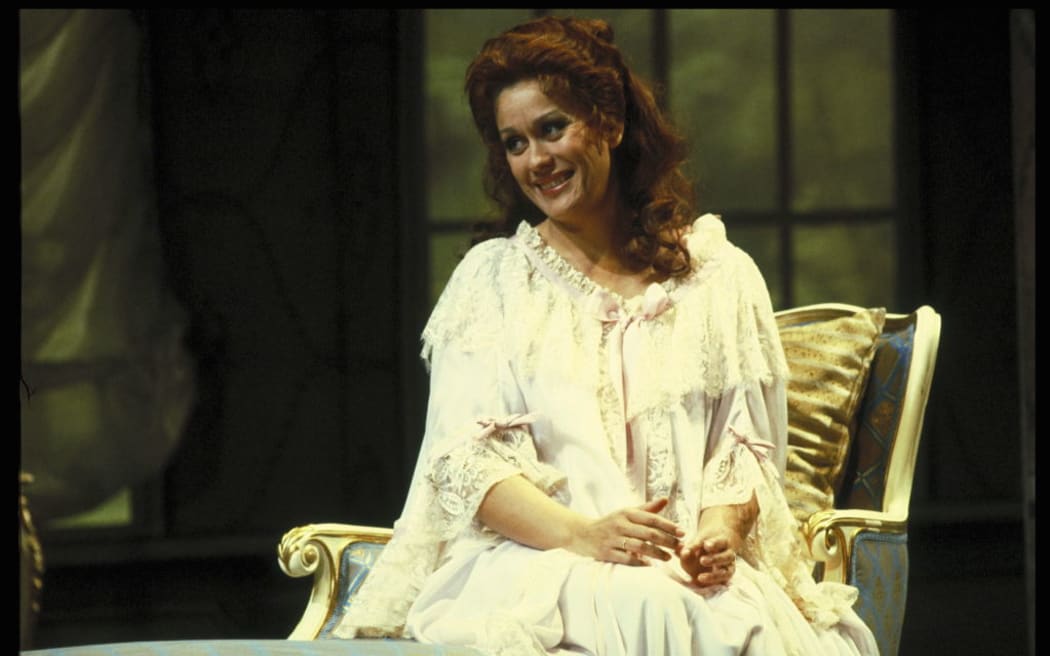
Kiri Te Kanawa as the Marschallin in Der Rosenkavalier, at the San Francisco Opera House. Photo: Ron Scherl / Getty Images
A vision of comfort and moveability; lovely, soft, and light. Gibson imagines it would've been a joy to wear and much easier to wash.
1994 - 50th birthday concert
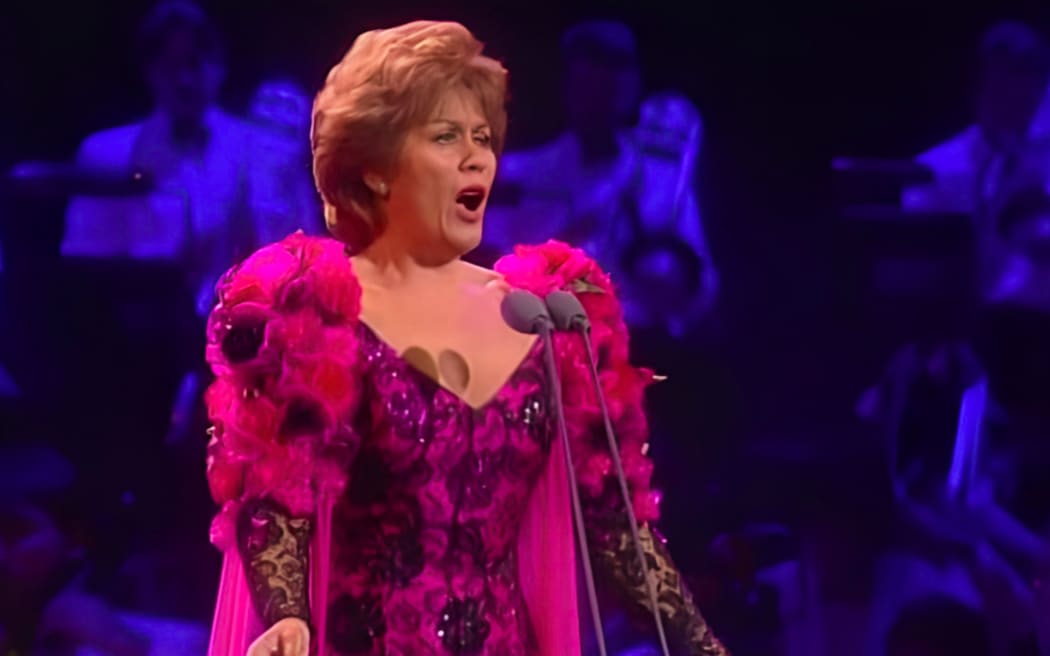
Dame Kiri Te Kanawa's 50th birthday dress is "quite a statement garment", Gibson says. Photo: Screenshot
Perhaps one of Dame Kiri's more dramatic debuts, the 50th birthday dress featured a detachable cape and sleeves. Halfway through her concert, she switched them out and it looked like a completely new dress. And though it came a little after the puff-sleeve fad of the 1980s, it reflected Dame Kiri's love of shape in her clothing.
"I love this, the big shoulders, the dramatic skirt," Gibson says.
"The beaded, black lace gives it bit of an edge, but there's still a softness with the femininity of the pink. It's quite a statement garment, it's beautiful in real life - the flowers on the sleeves are lovely.
"Her designers were very clever. It was dramatic, unique, and expressed her personality on stage."
2002 - Queen Elizabeth's Golden Jubilee

Dame Kiri Te Kanawa at Queen Elizabeth's Golden Jubilee at Buckingham Palace. Photo: Tim Graham
Dame Kiri developed a special relationship with the royal family over the years. In 2002, she was invited to sing at Queen Elizabeth's Golden Jubilee. But where the royal wedding dress was busy and distracting, this dress took things to the other extreme. With a bare neck and chest, you were focused more on her face and voice.
"It's like she offered herself up as a blank canvas so you could just enjoy the music," Gibson says. "It's a beautiful dress, beautiful sequins, and beads. It's very elegant, and she's favoured that slim shape probably ever since. She left that big fairy princess look behind in the 90s."
2018 - Appointed a Member of the Order of the Companions of Honour
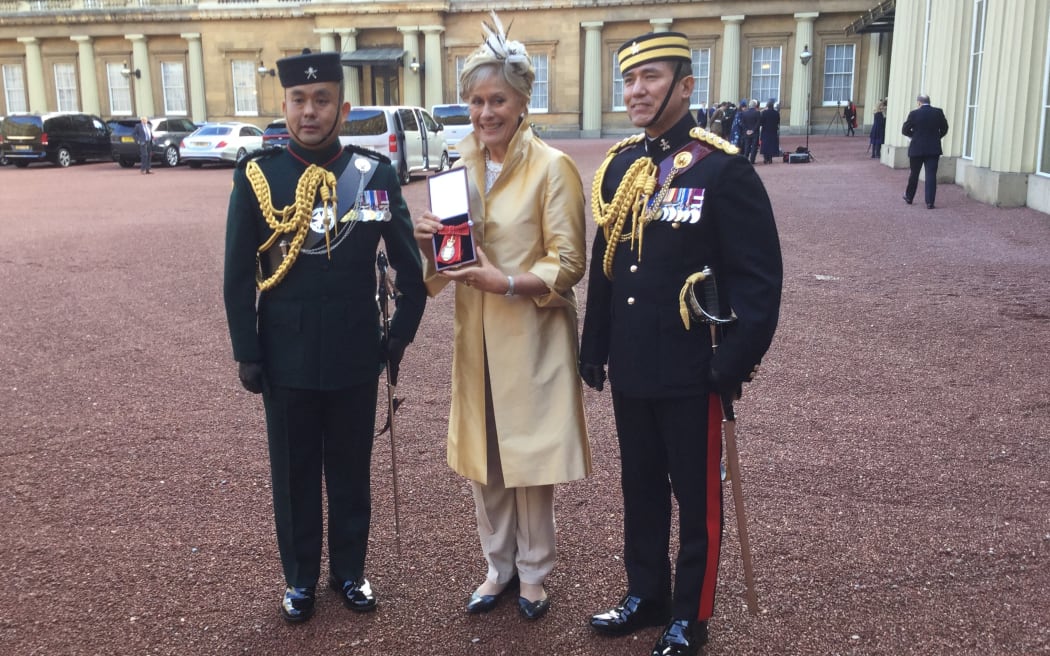
Dame Kiri after being appointed a member of the Order of the Companions of Honour, 2018 Photo: Supplied
Increasingly over time, Dame Kiri has opted for a narrow, elegant silhouette. Gibson says she was always very attuned to the location, the environment, the culture of the audience - and she always had a say in what she wore.
"What I really admire is it's her taste, she's in control, she chooses. She's not being pulled in different directions by different whims and fashions. She has a really strong sense for fabric and feel and texture and colour and pattern, and what suits her and what she enjoys wearing."
Dame Kiri was a great curator of her wardrobe - she carefully documented where each one had been worn, with themes and names to match. She loved colour, silk, fabrics, flamboyance - "she's really proud of who she is and how she expresses herself; I find that very empowering," Gibson says.
"She had an amazing, interesting, varied career... and the garments are part of her biography."

